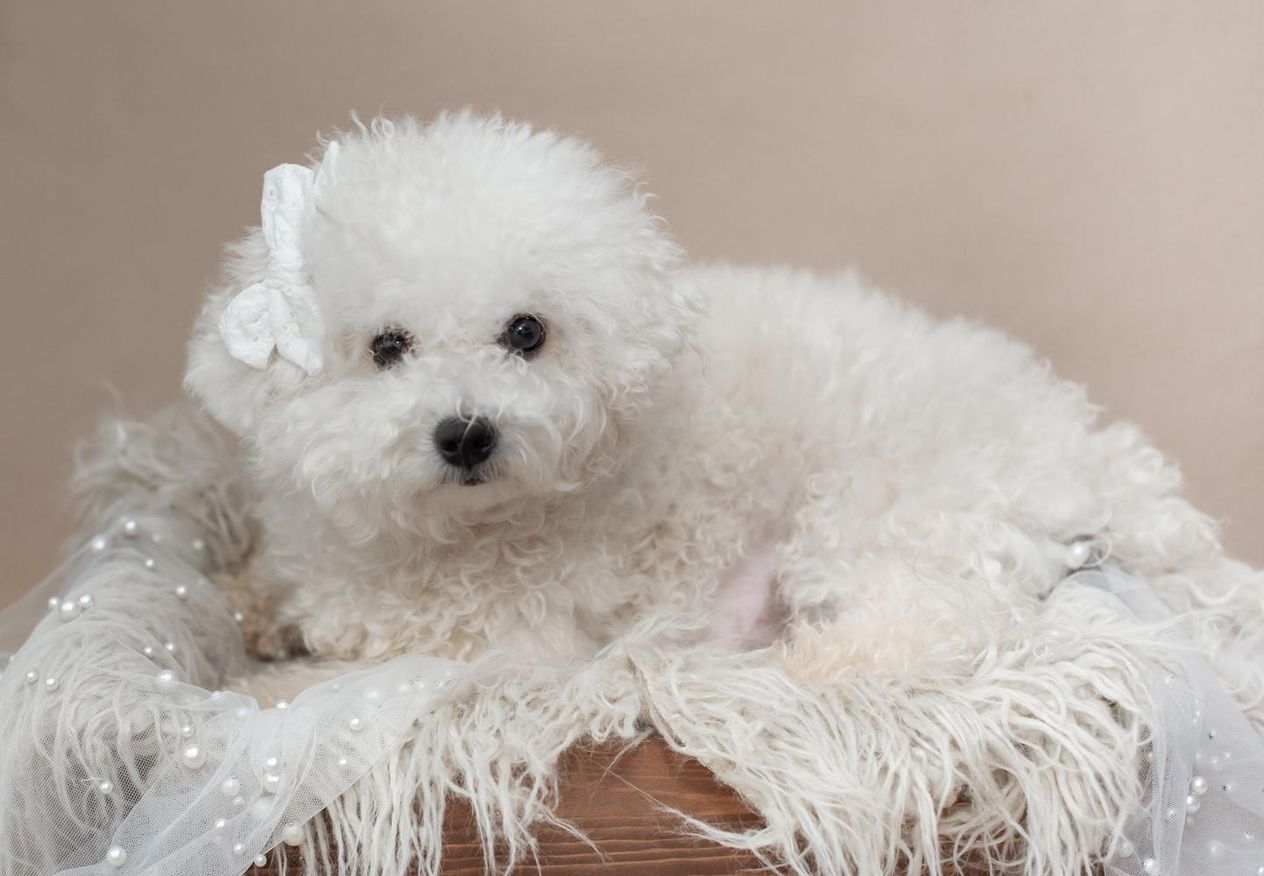Get to know
Bichon Frises

Veterinarian reviewed
This living puffball is as bouncy and fun as any real ball.
Browse available puppies
Connect with reputable breeders to find the dog of your dreams
At a glance
Low Energy
Energy level
2/5
High Maintenance
Grooming
5/5
Small
Size
Bubbly, alert, affectionate
Temperament
14-15 years
Lifespan
Quick to Learn
Training
4/5
Medium Vocality
Barking
3/5
At a glance
Energy level
Low Energy
Grooming
High Maintenance
Size
Small
Temperament
Bubbly, alert, affectionate
Lifespan
14-15 years
Training
Quick to Learn
Barking
Medium Vocality
Why people love the breed
Bichons are ridiculously cute, so much so they look like a cartoon of an adorable dog. And they’re just as cute in personality as they are in looks.
Appearance
The Bichon is like a giant dandelion puff come to life in a super-animated dog form.
Grooming
Grooming is part of owning a Bichon. For some owners, it’s one of the best parts.
Siren Bichon Frise
Breed temperament and characteristics
Bichons epitomize charm with their adorable appearance and delightful personality.
Exercise
The spunky, bubbly Bichon is always ready to play.
Blessed Treasures Bichons
Training
Bichons were originally bred as companions and as street and circus performers. Learning is in their genes.
Diet and nutrition
Bichons can thrive on commercial diets.
Cambeas Puppies
Health issues
Bichons are overall a very healthy breed, but are susceptible to a few health conditions.
Lifespan: 14 to 15 years.
Other health issues
These include orthopedic issues such as hip dysplasia and patellar luxation, ocular conditions like cataracts and epiphora, urinary stones, and patent ductus arteriosus.
History
The Bichon has gone from riches to rags—and back again.
About the author
Canine specialist, Caroline Coile, Ph.D., is the author of 34 dog books, including the top-selling Barron's Encyclopedia of Dog Breeds. She’s written thousands of magazine and web articles about dogs. She specializes in canine science, health, breeds and competitions. Caroline has won 20 national dog-writing awards, and was a 2015 Inductee into the Dog Writers Association of America Hall of Fame.
Veterinarian reviewed
Dr. Nate Ritter, DVM is the Veterinary Medical Director at Good Dog. He earned his Bachelor of Science in Biology from Lafayette College and his Doctor of Veterinary Medicine degree from Virginia-Maryland College of Veterinary Medicine. He is a member of the American Veterinary Medical Association, New York State Veterinary Medical Society, the Veterinary Medical Association of New York City, and the Society for Theriogenology. Additionally, he is a USDA-accredited veterinarian.
Breed Scorecard
Characteristics and temperament
Affectionate with family
5
Watchdog level
4
Playfulness
5
Adaptability
5
Social needs
5
Temperament
Bubbly, alert, affectionate
Intelligence
3
Good with other dogs
5
Good with cats or other pets
5
Friendly with strangers
5
Good as a service dog
2
Good for apartments
5
Barking level
3
Appearance
Height
9-11"
Size
Small
Colors
White, White and apricot, White and buff, White and cream
Coat texture
Slightly harsh
Coat length
Long, curly, stand off, with furnishings
Training
Trainability
4
Exercise
Exercise needs
2
Exercise time
Around 45 minutes to one hour daily
Mental exercise needs
3
Favorite activities
Tricks
Grooming
Grooming needs
5
Brushing frequency
Daily
Needs professional grooming?
Yes
Drooling level
1
Health issues
Other health issues
Other
Bred for
Companionship
Country of origin
Mediterranean area
Popularity level
2
FAQs
On Good Dog, you can search for Bichon Frise puppies or dogs in rescues and shelters. Adopting a Bichon Frise from a shelter or rescue is generally less expensive than buying a puppy from a breeder with ethical practices. Across the United States, there are dedicated rescues that specialize in specific breeds and may even help transport a Bichon Frise dog to you from another part of the country. Although it can be more cost-effective, adopting the exact breed you're looking for is typically more difficult than working with a responsible breeder. Learn more about adopting a dog from a shelter or rescue.
The typical price for Bichon Frise puppies for sale may vary based on the breeder and individual puppy. On average, the price of Bichon Frise puppies from a breeder is $2,390.
The average price of a Bichon puppy is $2,000 - 2,800. The price of a Bichon puppy from a good breeder can be related to their show potential, health certifications, or other factors.
It seems to be a small dog thing. They are lively, alert dogs and they may want attention, or alert you to a guest.
Their coat requires professional grooming and everyday combing. They demand lots of attention. Some are hard to housetrain. But-–they are affectionate, fun, and gorgeous. So they’re worth it.



